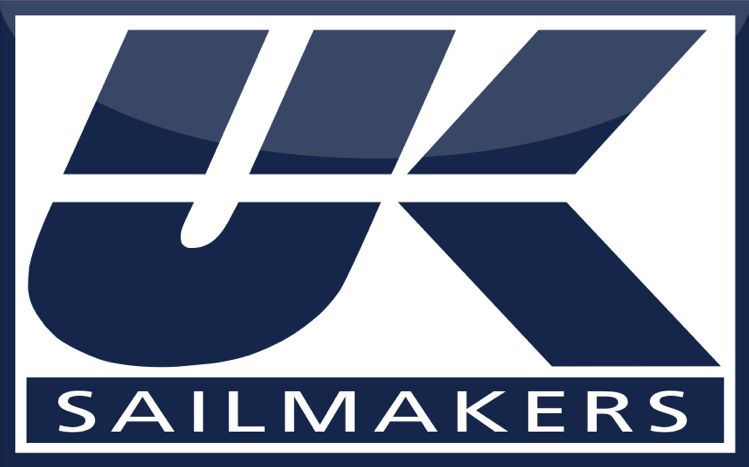Cross-Cut Laminate Cruising Mainsail
Polyester Flex mainsail and non-overlapping cruising genoa.
Diagram 1. Cross-cut panels with Fill Oriented cloth shown oriented perpendicular to the straight-line leech. The inset shows the “fill” and “warp” thread directions. In a fill oriented cloth, the fill yarns are stronger than the warp yarns.
Sails made with cross-cut panels are the most economical sails to make because there is very little cloth waste. Sails made with Flex laminates are designed to be the least expensive laminate sail since they can be made with cross-cut panels without having to be reinforced with load bearing tapes.
To understand the unique structure of Flex, one needs some background on sail construction. A cross-cut sail has all panels parallel to each other and perpendicular to the straight-line leech. This construction uses sailcloth that has the stronger yarns going across the panel instead of along the length of the roll of cloth, see inset in Diagram 1. In woven cloth, the yarns running across the roll of cloth are called the “Fill Yarns” and the yarns running along the roll are called “Warp Yarns.” A cloth that has stronger yarns in the fill direction is called a “Fill Oriented” cloth.
FLEX is a fill oriented cloth made of a loose weave of warp and fill yarns that is bulked up with two sets of X-Ply around the fill yarns. See Photo 1.
The purpose of two sets of X-Ply yarns, more in-line with the fill yarns (highlighted in blue and yellow), is to pick up the loads going up and down the leech. In a “string sail,” e.g. Tape-Drive, X-Drive and Titanium, the continuous yarns or tapes smoothly carry the loads between the head and the clew along the leech. In a tri-radial sail, narrow panels are angled so that long, strong warp yarns can be aligned with the leech loads. In FLEX sails the two sets of X-Yarns are there to pick up the loads not perfectly picked up in the cross-cut layout.
For cruising sailors, FLEX laminates can be made with polyester yarns of varying density and with or without taffeta.
Photo 1. Warp yarns shown in red, fill yarns shown in green, 20° X-Ply yarns shown in yellow and 30° X-Ply yarn show in blue. The two sets of X-Ply yarns are closer to the fill direction than the warp direction to support the loads along the leech, where the highest loads in the sail run.
Available Details
Available with:
- Reefs
- Loose Foot
- Cunningham
- Telltales
- Draft Stripes
- Sail Numbers
- Leechline Options
Battens:
- Powerhead
- Full Battens
- Furling Mains
Other Options:
- Lazy Cradle
- Lazy Jacks
- Dutchman
- Sail Cover
